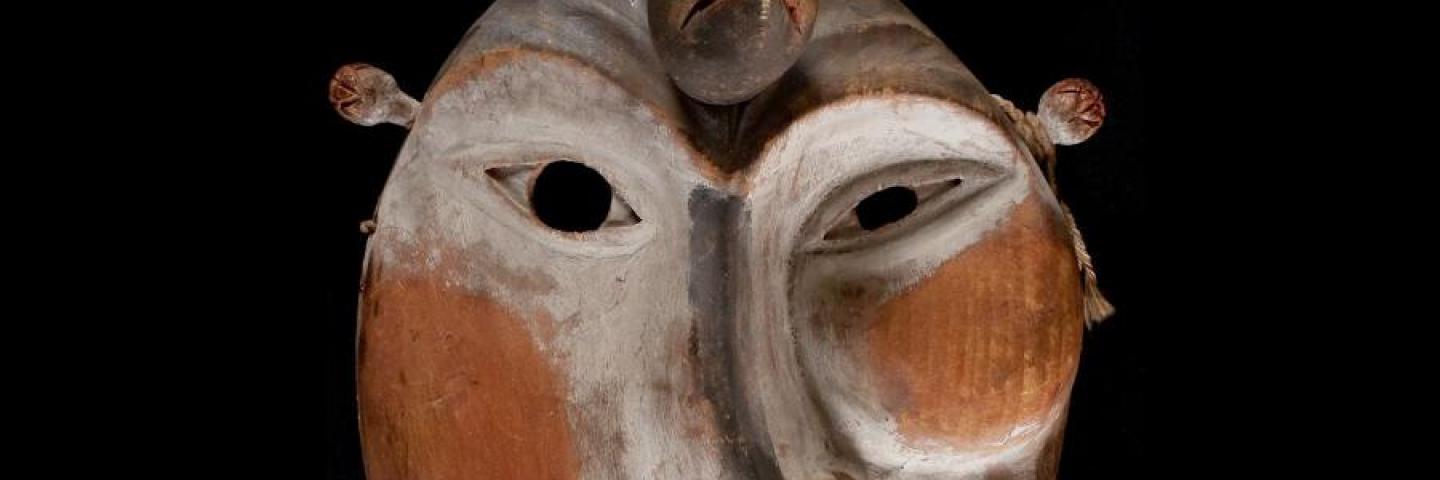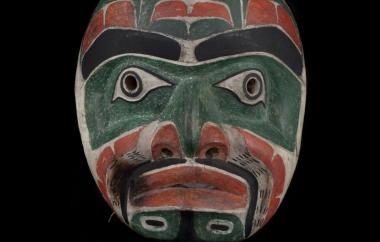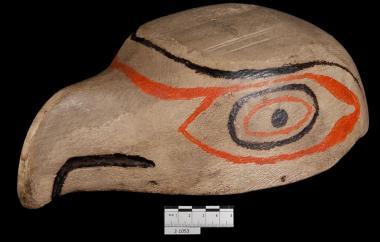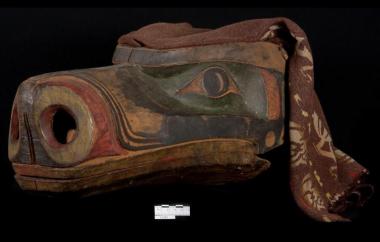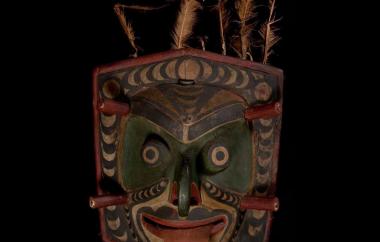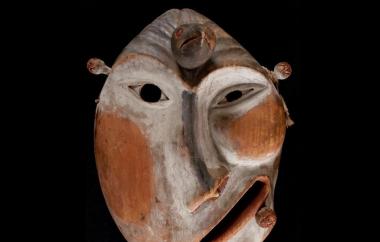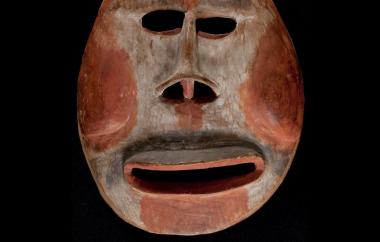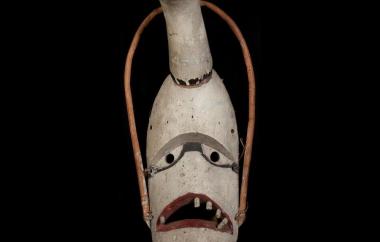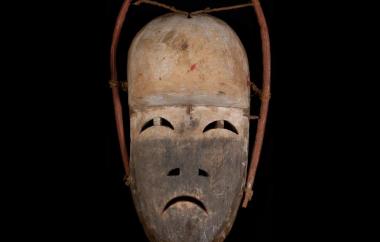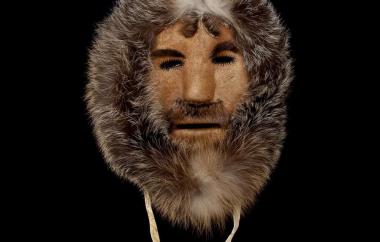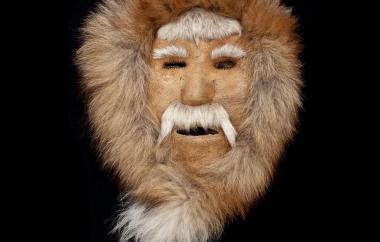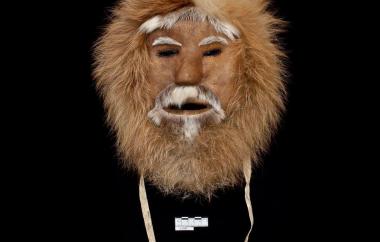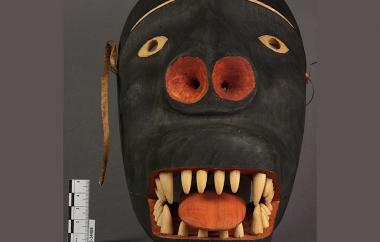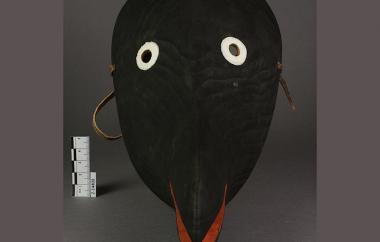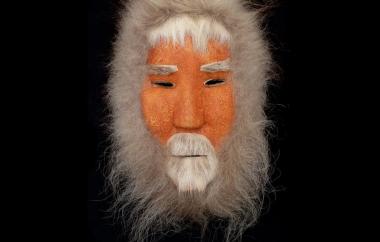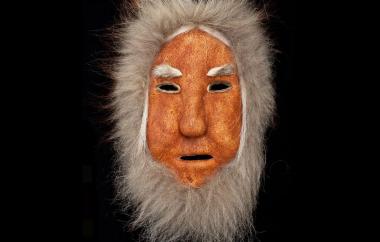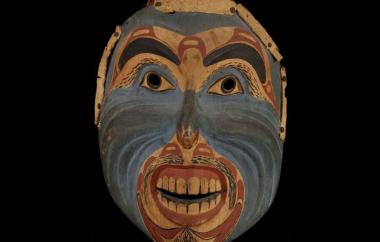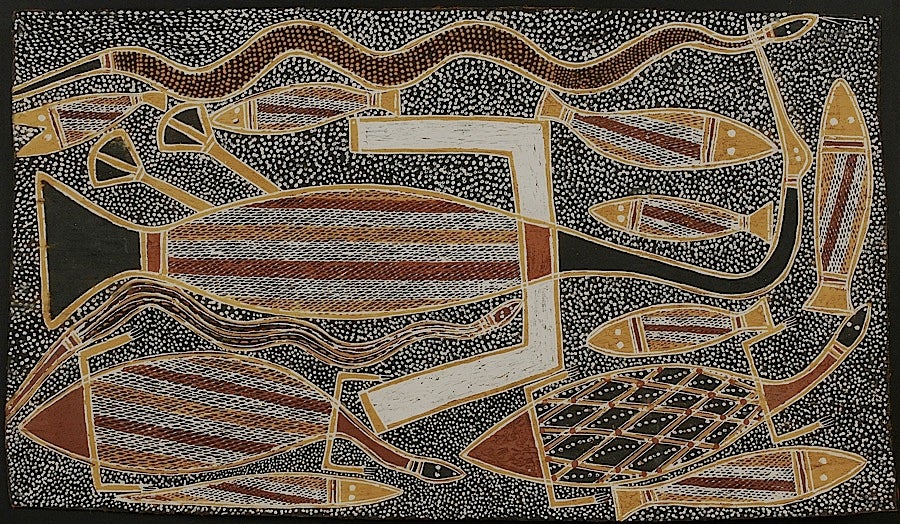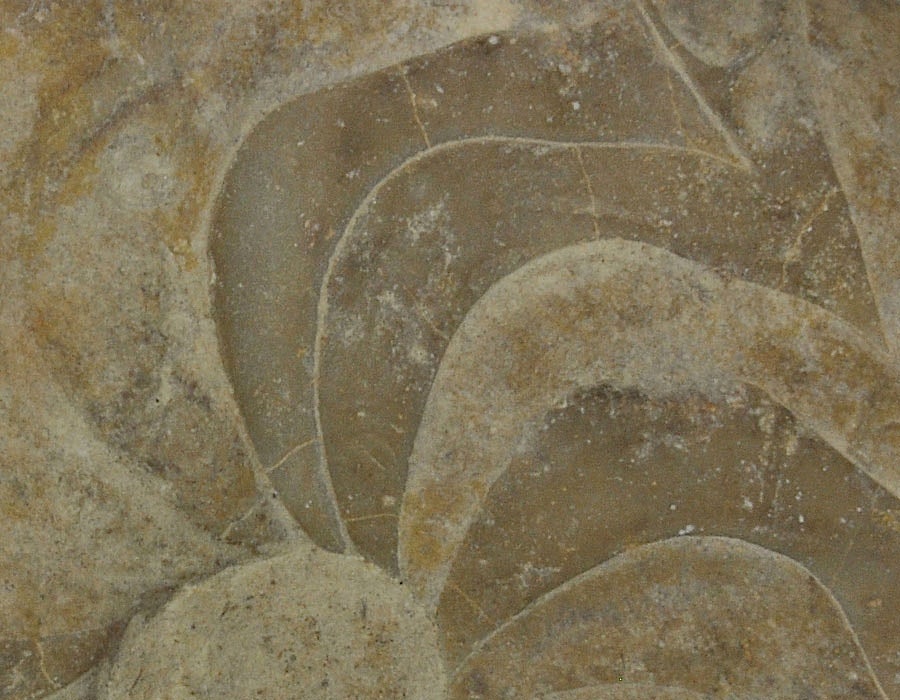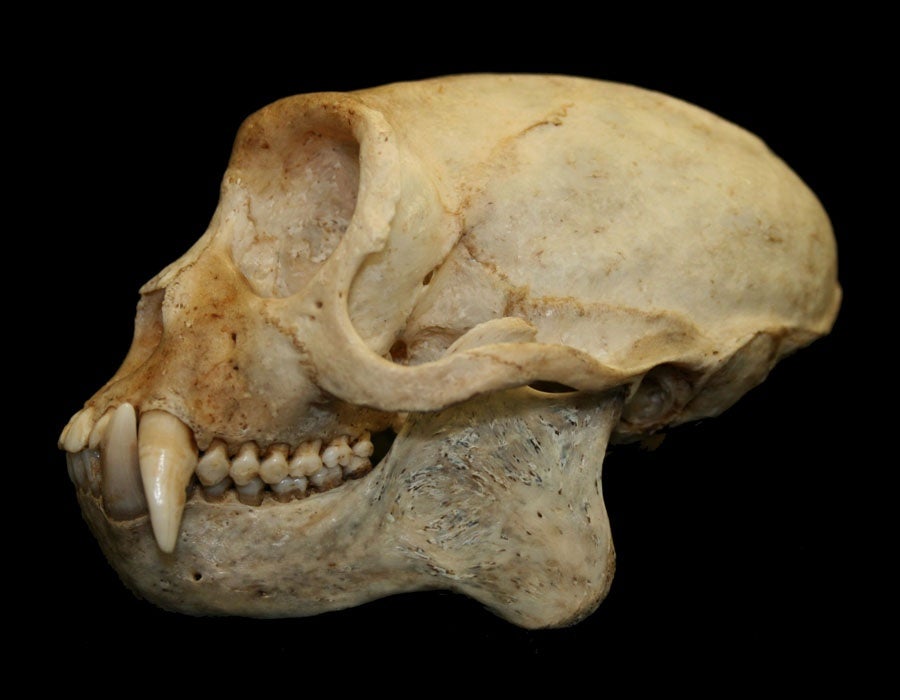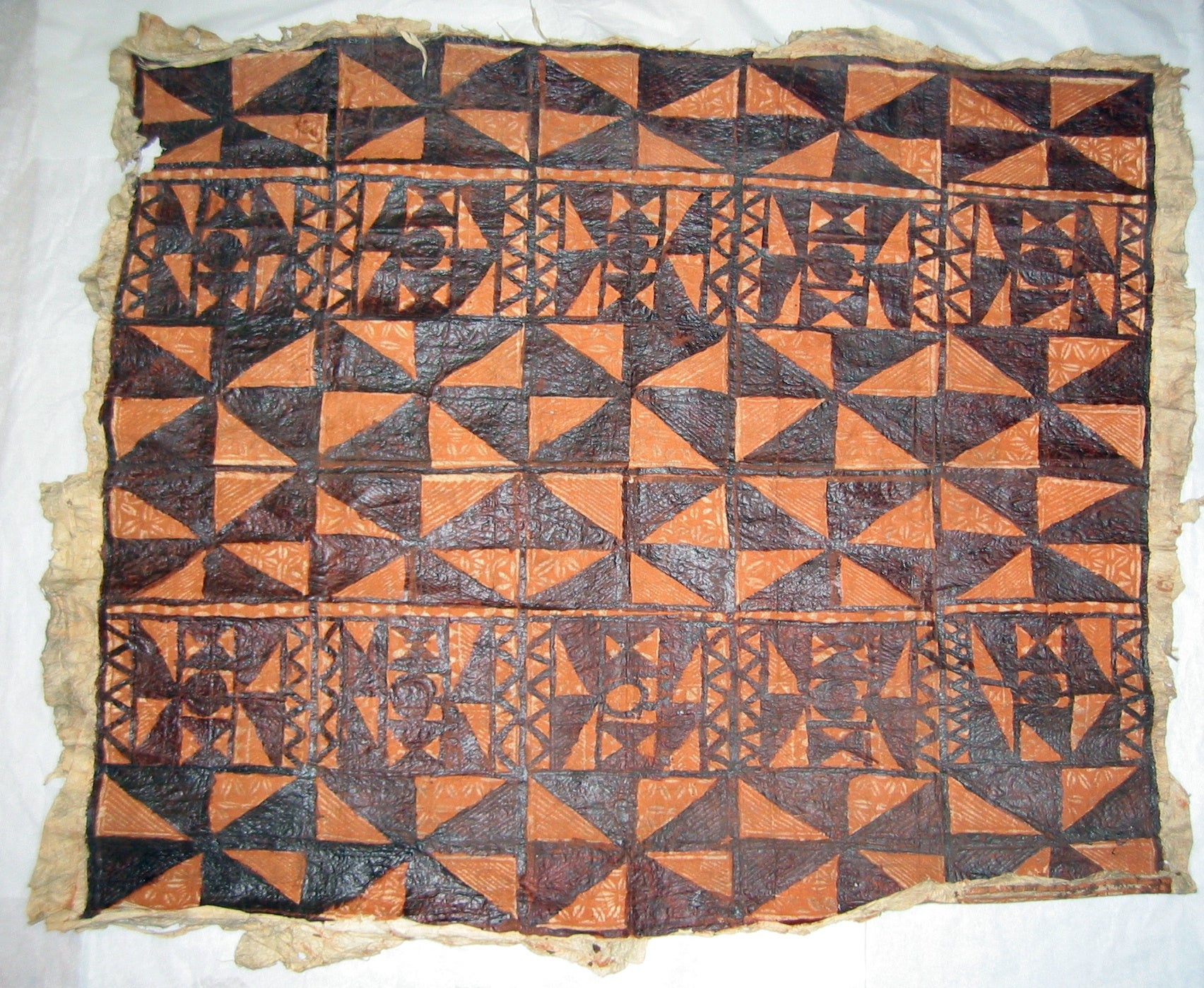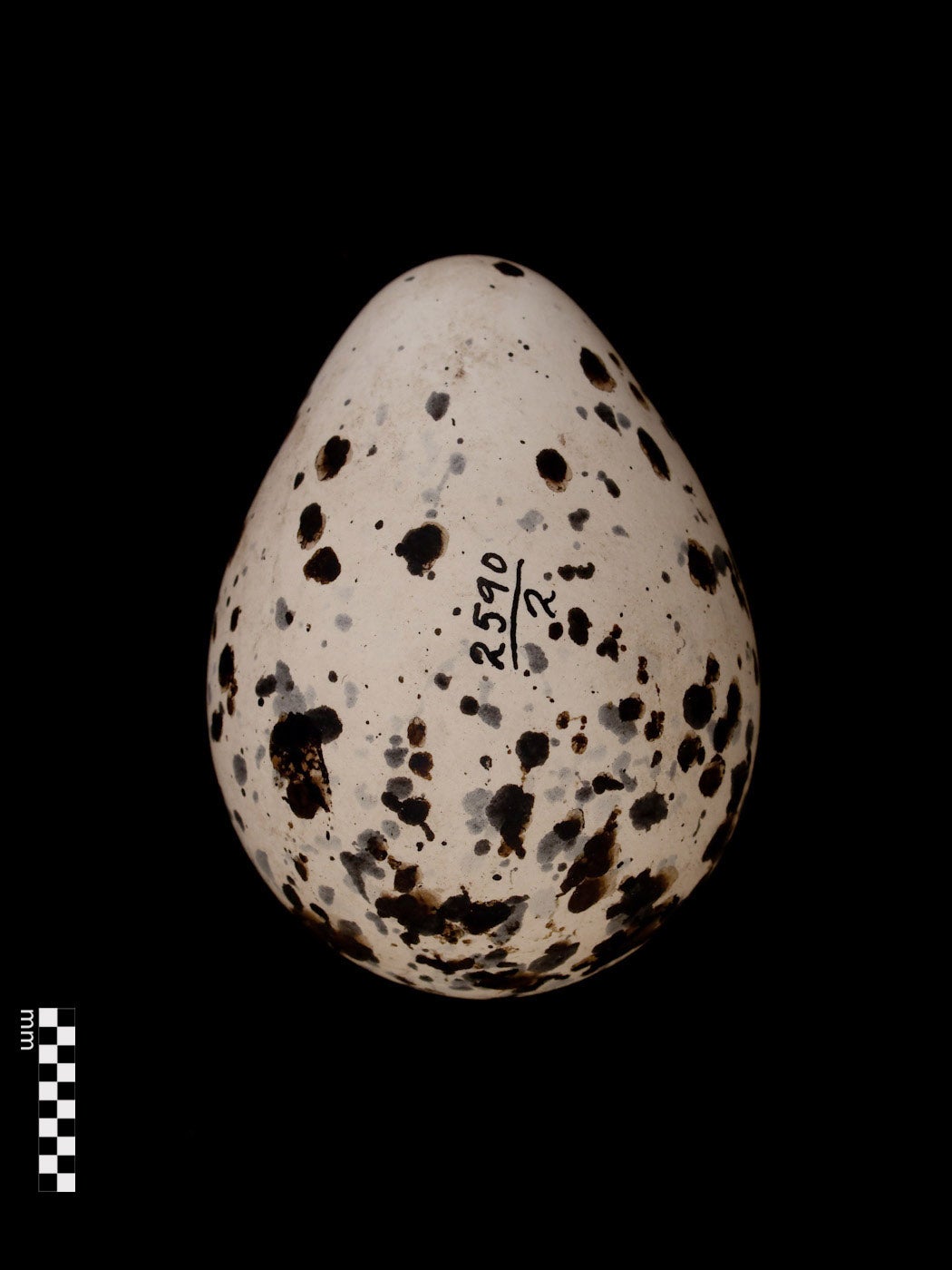For Native peoples of the Pacific Northwest, winter is a time of dance and performance. Among Northwest Coast peoples, including the Kwakwaka’wakw, Makah, and Nuu-chah-nulth represented here, masks are an essential part of important winter ceremonials, which reenact the adventures of hero-ancestors and spirit beings in the mythological past. The rights to these ritual dances have been passed down in families as treasured privileges, and while the themes are similar, the ceremonies vary in detail from region to region.
In Alaska, Yup’ik and Inupiaq peoples honor animals in a variety of ceremonies, the most important of which are the great midwinter hunting festivals. Historically, masks carved by shamans or under their supervision were worn in special dances to please the spirits. As intermediaries between people and spirits, shamans learned the wishes of game animals from visions and trips to the spirit world. Masks could also represent the shaman’s spiritual helpers, which he would try to influence in times of need. Sometimes hung in houses to ward off harmful spirits, masks were also occasionally placed with the dead or used in non-spiritual contexts for popular entertainment. The Yup’ik and Inupiaq masks shown here were made primarily for sale to non-Native customers.
Images © UO Museum of Natural and Cultural History. Production of this gallery was generously supported by The Ford Family Foundation.
Catalog #2-1054
Humanoid mask
Kwakwaka’wakw(?), Northwest Coast. Received 1938.
Catalog #2-1053
Eagle mask
Makah, Northwest Coast. Received 1938.
Catalog #2-1055
Grizzly bear mask
Kwakwaka’wakw, Northwest Coast. Said to be at least 75 years old when collected at Fort Rupert, 1938.
Catalog #2-1056
Humanoid mask
Kwakwaka’wakw, Northwest Coast. Fort Rupert, 1938.
Catalog #2-1057
Humanoid mask
Nuu-chah-nulth, Northwest Coast. Received 1938.
Catalog #2-1058
Khweykhwey mask, female
Kwakwaka’wakw, Northwest Coast. Vancouver Island, received 1938.
Catalog #2-1110
Bird mask
Yup’ik, Alaska. Mouth of Yukon River, received 1938.
Catalog #2-1218
Humanoid mask
Yup’ik, Alaska. Mouth of Yukon River, received 1938.
Catalog #2-1219
Humanoid mask
Yup’ik, Alaska. Mouth of Yukon River, received 1938.
Catalog #2-1354
Humanoid mask
Nuu-chah-nulth, Northwest Coast. Ucleulet, BC, received 1938.
Catalog #2-7108
Goose mask
Yup’ik, Alaska. Collected 1921-22.
Catalog #2-7109
Humanoid mask
Yup’ik, Alaska, Collected 1921-22.
Catalog #2-7995
Man’s face
Inupiaq, Alaska. Anatuvuk Pass style, received 1960.
Catalog #2-7996
Man’s face
Inupiaq, Alaska. Anatuvuk Pass style, received 1960.
Catalog #2-7997
Man’s face
Inupiaq, Alaska. Anatuvuk Pass style, received 1960.
Catalog #2-14408
Wolf mask
Inupiaq, Alaska. Charles Mayac, King Island, received 1969.
Catalog #2-14409
Raven mask
Inupiaq, Alaska. Charles Mayac, King Island, received 1969.
Catalog #2-14410
Humanoid mask
Inupiaq, Alaska. Charles Mayak, King Island, received 1969.
Catalog #2-14416
Humanoid mask
Yup’ik, Alaska. Nunivak Island, received 1969.
Catalog #2-14421
Man’s face
Inupiaq, Alaska. Anaktuvuk Pass, received 1969.
Catalog #2-14422
Woman’s face
Inupiaq, Alaska. Anaktuvuk Pass, received 1969.
